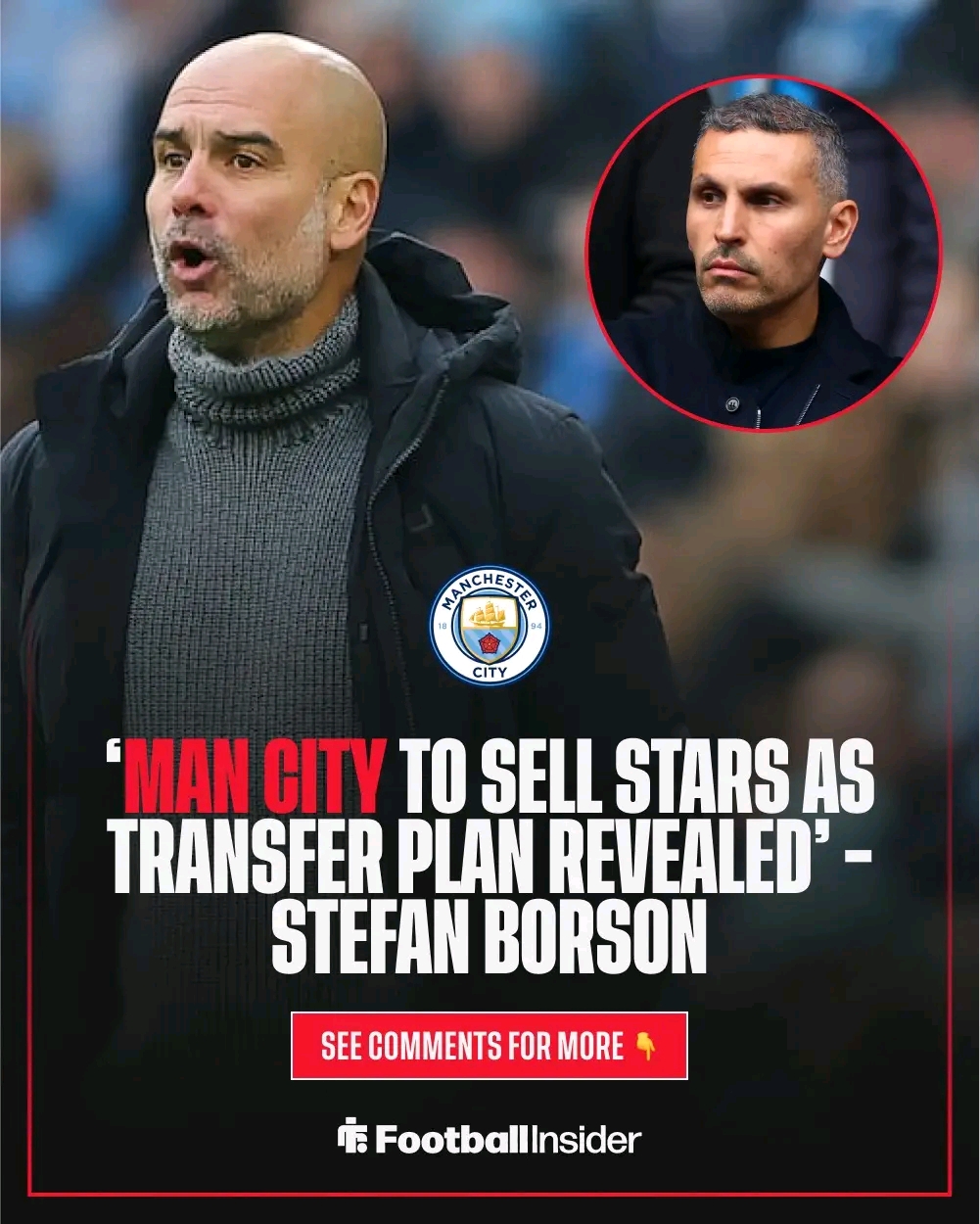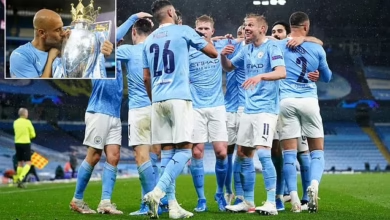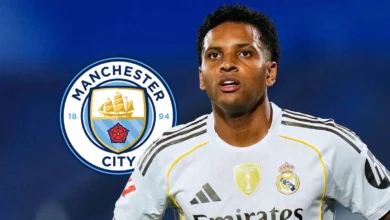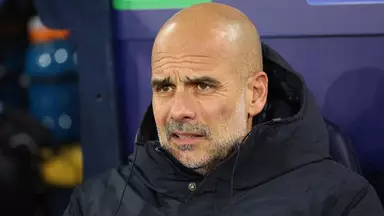Man City to sell stars as transfer plan revealed’ – Stefan Borson

Manchester City finds itself at a pivotal crossroads in the summer of 2025, facing the complex challenge of rebuilding their squad while navigating the intricate financial landscape of modern football. Under the stewardship of Pep Guardiola and the strategic oversight of Chairman Khaldoon Al-Mubarak, the Citizens are embarking on what promises to be one of the most significant transfer windows in the club’s recent history. The need for strategic player sales has become paramount as the club seeks to balance their books while maintaining their competitive edge in both domestic and international competitions.
The 2024-25 season proved to be a sobering experience for Manchester City, a club accustomed to collecting trophies with remarkable consistency. Despite their eventual third-place finish in the Premier League, the campaign highlighted several areas requiring immediate attention. The absence of silverware for the first time in years has prompted a thorough evaluation of the squad’s composition and tactical approach, leading to the current reconstruction phase.
The financial dynamics governing Manchester City’s transfer strategy cannot be understated. With approximately £115 million already invested in new talent during the early stages of the summer window, the club faces mounting pressure to generate revenue through player sales. This financial balancing act reflects broader trends across European football, where clubs must increasingly rely on strategic player transactions to maintain compliance with Financial Fair Play regulations while funding their ambitious recruitment plans.
Stefan Borson, the former financial adviser to Manchester City, has provided crucial insights into the club’s current predicament. His analysis reveals that the Citizens’ ability to continue their recruitment drive hinges significantly on their capacity to move players out of the Etihad Stadium. This situation mirrors challenges faced by other Premier League giants, creating a domino effect across the transfer market where clubs must sell before they can buy.
The financial constraints facing Manchester City are not unique in the current football landscape. Clubs across Europe are grappling with similar challenges, forced to adopt more strategic approaches to squad management. The days of unlimited spending appear to be behind us, replaced by a more calculated methodology that prioritizes both immediate impact and long-term sustainability.
Manchester City’s summer recruitment has already yielded three significant additions to their squad, each representing a specific tactical requirement identified by Guardiola and his coaching staff. The acquisition of Tijjani Reijnders addresses the club’s need for midfield creativity and dynamism, bringing a player whose technical ability and vision align perfectly with City’s possession-based philosophy.
Rayan Cherki’s signing represents a strategic investment in attacking versatility and youth. The French talent offers the kind of unpredictability and flair that can unlock stubborn defenses, qualities that proved crucial during City’s struggles in the previous season. His ability to operate across multiple positions in the final third provides Guardiola with tactical flexibility that will be essential as the club competes across multiple competitions.
The addition of Rayan Ait-Nouri strengthens City’s defensive options while providing the attacking thrust from wide areas that has become synonymous with modern full-back play. His pace and crossing ability offer a different dimension to City’s attacking patterns, potentially providing the kind of direct threat that can complement their intricate passing combinations.
These acquisitions reflect a broader strategic vision that extends beyond mere squad reinforcement. Each player brings specific attributes that address tactical deficiencies identified during the previous campaign, suggesting a methodical approach to squad building that prioritizes coherence over marquee signings.
Pep Guardiola’s continued presence at the helm of Manchester City cannot be separated from the club’s transfer strategy. The Catalan manager’s explicit warning about working with an oversized squad next season has added urgency to the club’s efforts to streamline their playing personnel. Guardiola’s preference for a lean, focused squad reflects his coaching philosophy and his belief that every player must contribute meaningfully to the team’s objectives.
The manager’s stance on squad size represents more than mere preference; it reflects a tactical philosophy that emphasizes cohesion, competition, and commitment. Guardiola’s most successful periods have coincided with periods when he has worked with relatively compact squads where every player understands their role and feels valued. This approach requires careful selection of personnel and, consequently, the difficult decision to part ways with players who no longer fit the tactical blueprint.
Guardiola’s influence extends beyond tactical considerations to encompass the broader culture and mentality within the squad. His demand for complete dedication and tactical discipline means that players who cannot adapt to his evolving vision become surplus to requirements, regardless of their individual talents or past contributions to the club.
The transfer market dynamics affecting Manchester City are symptomatic of broader trends across the Premier League’s elite clubs. Manchester United and Liverpool find themselves in similar predicaments, where their ability to strengthen their squads depends heavily on their success in moving players out. This interconnected web of dependencies creates a complex market where timing and negotiation skills become as important as identifying the right targets.
The situation at Manchester United exemplifies these challenges. The Red Devils’ ambitious rebuilding project under their new management requires significant investment, yet their ability to complete their preferred deals remains contingent on successful player sales. This creates a delicate balance where clubs must simultaneously pursue incoming targets while working to facilitate departures.
Liverpool’s position reflects similar constraints, with the Merseyside club needing to generate funds through player sales to support their own recruitment ambitions. The interconnected nature of these transfer strategies means that movement at one club can trigger activity elsewhere, creating a domino effect that influences the entire market.
The situation surrounding James McAtee provides a compelling case study in the complexity of modern football transfers. The young England international’s decision-making process illustrates how player preferences and career ambitions can significantly impact a club’s transfer strategy. McAtee’s apparent preference for a move to the Bundesliga over remaining in the Premier League reflects broader trends in young player development and the appeal of German football’s reputation for nurturing talent.
The interest from Nottingham Forest in McAtee demonstrates the competitive nature of the domestic market, where clubs are constantly seeking to improve their squads through strategic acquisitions. However, the player’s preference for a German destination highlights the international dimension of modern football transfers, where opportunities abroad can offer different developmental pathways.
The monitoring of McAtee’s situation by Borussia Dortmund, RB Leipzig, and Bayer Leverkusen underscores the reputation these clubs have built for developing young talent. Their interest suggests that McAtee’s potential move could provide him with the playing time and developmental opportunities that might be limited at Manchester City given their squad depth and competitive pressures.
The regulatory environment surrounding football finances has fundamentally altered how clubs approach transfer planning. Manchester City’s need to balance their spending through strategic sales reflects the broader impact of Financial Fair Play regulations on elite European football. These rules, designed to promote financial sustainability and competitive balance, have forced clubs to adopt more sophisticated approaches to squad management.
The implementation of these regulations has created a new paradigm where clubs must demonstrate financial responsibility alongside competitive ambition. For Manchester City, this means that their transfer strategy must satisfy both sporting and financial objectives, requiring careful coordination between different departments within the club.
The emphasis on player sales as a means of funding new acquisitions represents a significant shift from previous transfer windows where clubs might have operated with greater financial flexibility. This change has elevated the importance of player development and strategic squad planning, as clubs must now view every signing through the lens of both immediate impact and potential future value
Manchester City’s approach to player development takes on added significance in the context of their current transfer strategy. The club’s academy system, long recognized as one of the finest in European football, provides a crucial pipeline of talent that can either strengthen the first team or generate transfer revenue. The success of graduates like Phil Foden demonstrates the potential for academy products to become integral first-team players, while others may provide valuable transfer income.
The development pathway at Manchester City reflects a broader strategic vision that extends beyond immediate first-team requirements. By investing in youth development, the club creates multiple avenues for squad improvement and financial sustainability. Academy graduates who may not break into the first team can still contribute to the club’s success through their transfer value, providing funds for strategic acquisitions.
This approach to player development aligns with modern football’s emphasis on sustainability and long-term planning. Clubs that can successfully integrate youth development with first-team success gain significant competitive advantages, both in terms of squad quality and financial flexibility.
The timing of Manchester City’s transfer activities reflects the complex dynamics of the modern football market. The club’s early moves to secure Reijnders, Cherki, and Ait-Nouri demonstrate proactive planning designed to avoid the inflated prices often associated with late-window transfers. However, their need to generate funds through player sales creates a delicate balancing act that requires careful timing and negotiation.
The interconnected nature of the transfer market means that clubs must often wait for domino effects to trigger movement in their preferred deals. Manchester City’s position as both buyers and sellers in the market requires sophisticated planning to ensure that their objectives are met within the constraints of the transfer window.
The success of their transfer strategy will ultimately depend on their ability to generate sufficient funds through player sales while maintaining the squad quality necessary to compete at the highest level. This requires identifying players whose departures will not significantly impact the team’s performance while ensuring that any sales generate adequate revenue for reinvestment
Pep Guardiola’s tactical philosophy demands specific types of players who can execute his complex tactical systems. The manager’s preference for versatile players who can operate in multiple positions reflects his tactical flexibility and his desire to maintain unpredictability in his team’s approach. This philosophy influences both recruitment and departure decisions, as players must fit specific tactical profiles to earn their place in the squad.
The balance between youth and experience remains a crucial consideration in Manchester City’s squad planning. While young players offer energy and potential, experienced professionals provide the stability and leadership necessary for success in high-pressure situations. Achieving the right balance requires careful evaluation of each player’s contribution and potential impact on squad dynamics.
The tactical evolution of Manchester City under Guardiola continues to influence their transfer strategy. As the manager adapts his approach to new challenges and opponents, the club must ensure that their recruitment aligns with these tactical developments. This requires ongoing communication between the coaching staff and recruitment department to ensure coherence in their approach.
Manchester City’s participation in international competitions adds another layer of complexity to their transfer strategy. The demands of competing in multiple tournaments require squad depth and versatility, influencing both recruitment and retention decisions. The club’s global ambitions also impact their approach to player development and marketing, as they seek to maintain their status as one of the world’s premier football clubs.
The international dimension of modern football transfers means that Manchester City competes in a global market for talent. Their ability to attract players from around the world depends on their reputation, financial resources, and the opportunities they can provide for career development. This global perspective influences their approach to recruitment and their strategies for player retention.
The club’s international reach also impacts their commercial operations and revenue generation. Success in international competitions enhances their global profile and commercial appeal, creating additional pressure to maintain high performance standards while managing financial constraints.
The decisions made during this crucial transfer window will have lasting implications for Manchester City’s competitive position and financial health. The club’s ability to successfully navigate the current challenges while maintaining their competitive edge will determine their success in the coming seasons. This requires strategic thinking that balances immediate needs with long-term objectives.
The evolving landscape of football transfers, influenced by regulatory changes and market dynamics, demands adaptability and forward planning. Manchester City’s approach to this transfer window will serve as a template for future windows, establishing principles and strategies that can be applied as market conditions continue to evolve.
The success of their current strategy will ultimately be measured not only by their performance in the upcoming season but also by their ability to maintain financial sustainability while competing at the highest level. This dual objective requires sophisticated planning and execution across all areas of the club’s operations.
Manchester City’s summer transfer strategy represents a fascinating case study in modern football management, where sporting ambition must be balanced with financial reality. The club’s need to sell players before making additional acquisitions reflects broader trends in European football, where regulatory constraints and market dynamics have fundamentally altered traditional approaches to squad building.
The challenge facing Pep Guardiola and Khaldoon Al-Mubarak is to maintain Manchester City’s competitive edge while adapting to these new realities. Their success in navigating this complex landscape will depend on their ability to identify the right players to retain and develop, while making strategic decisions about departures that generate necessary revenue without compromising team performance. The interconn














